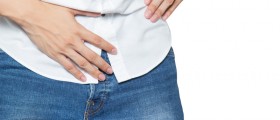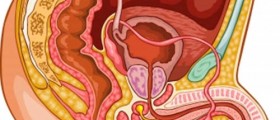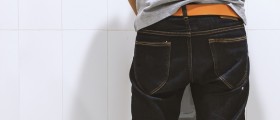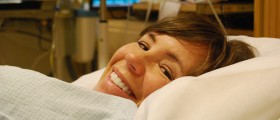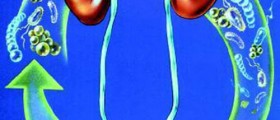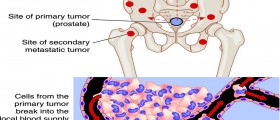Unless there is good reason no one could pay me enough to keep it in any longer.
Perhaps ask you doctor why he normally leaves them in for two days. But, if he said you are good to go after an overnight I would take his word for it.
Loading...
I hope this helps.
Loading...
Loading...
As far as the 2-way catheter, I did not find it that bad. We're all different, and yes there was some discomfort, but I was able to deal with it pretty well. The worst part was removing it, and that lasts like 5 seconds (luckily). Maybe I was lucky. We're all different. Hopefully it will be fairly benign for you as well.
Loading...
Thanks for ur supportagain! I will have the catheter for just overnight and not 2 days.
Loading...
Loading...
My impression of the urology profession is that it is opaque. most urologists are reluctant to explain anything to their patients and also reluctant to adopt new techniques. So BPH patients are often kept in the dark.
I had spent t a lot of time doing research on aqublation and EP. Aqua designs its tissue removal profile in such a way that it preserves some tissues near the verumontanum. The result of this preservation is that it claims to have achieved a RE rate of less than 10%. The 10% results is about the same as what had been achieved with EP TURP and EP GLL. However, what is different is that Aquablation clinical trial was done just about a year ago so it is very recent.
The clinical trial also proved that aqua is “non inferior” to TURP.
So I am pretty sure that if HoLEP also preserves the same tissues near the verumontanum that aqua preserves. HoLEP should have the same functional outcomes as aquablation if not better. A results that many holep patients would be happy to have .
I really want to encourage future holep patients to discuss EP with their urologists if EP is important to them.
Loading...
Peter Gilling, the inventor of holep, was one of the principal investigators of The aqublation clinical trial. So the results are creditable.
Loading...
Loading...
Hello Buster,
The internal sphincter has nothing to do with EP. My research results was posted on other site 3 months ago and is reposted below as I believe it is relevant to this thread.
***this post is edited by moderator *** *** copied content from another website *** Please read our Terms of Use
Loading...
(D) EP-TURP (mono), EP-TURP (bipolar), EP-TURP (bipolar and enucleation)
(1) "Alloussi et al. showed in a prospective study on 89 patients ... [6]. They performed the standard monopolar resection except that they ensured the preservation of the verumontanum and the surrounding tissues. The resection of the median lobe had to stop at 1 cm above the verumontanum. As, for the lateral lobes, they were resected to the verumontanum level, but without damaging the paracollicular tissue. The bladder neck was resected in a standard man- ner. Using these anatomical landmarks to preserve the apical area, 91% of the patients had preserved ejaculatory functions. Functional results were satisfactory with significant improvements in maximum flow rate (+ 14.3 ml/s), PVR (- 59 ml), and IPSS (- 18.3) at 3 months . These improvements were maintained at 60 months. No serious adverse events were reported, but 13% patients received a second TURP due to the development of bladder neck scar tissue during long-term follow-up."
"The epTURP procedure was repeated in eight patients (12.7%) following the development of bladder neck scar tissue and diagnosis of BOO during long-term follow-up. Re- treatment did not influence the ability to preserve antegrade ejaculation in these patients."
Note: I did compare Alloussi's IPSS, Qmax and PVR for EP-TURP against other published standard TURP results. Indeed, his results are comparable to them.
(2) "Ronzoni et al. reported similar results in a prospective controlled study [5]. After 2 years of follow-up, 80% of the patients who had partial resection presented conserved ejaculatory function. Therefore, it appears that modified-TURP allowed the preservation of antegrade ejaculation with equivalent functional outcomes to the conventional TURP."
Note the important words "equivalent functional outcomes to the conventional TURP".
(3) "Rhouma et al. reported a prospective, randomized, single-blind, comparative study between modified-TURP (preservation of 1 cm tissue around the supramontanal prostate) versus conventional TURP (n = 70 patients) [37]. Average prostate volume was 60 and 58 cc, respectively. ... No serious adverse events were reported with the two techniques. Significant improvements in urinary function were similar, assessed by decreased IPSS scores and PVR (IPSS: from 21.4 to 7.06 and from 21.06 to 7.54, respectively, p = 0.7. PVR: from 211 to 26 cc and from 204 to 49 cc, respectively; p = 0.2). The ejaculation was preserved in 65.7% with the modified-TURP versus 28.6% with the conventional TURP . Unfortunately, the follow-up was only 3 months."
Note: for EP-TURP, the success rate is from 65.7% to 91%. The difference could be due to the the surgeon used slightly different techniques or the small sample size or both of them. The average of these two numbers is 78%.
Sometimes ejaculation preservation was only partially successful as illustrated by the small sample study form Moscow given below.
(4) "Ejaculatory-protective transurethral resection of the prostate" by Martov et al., published in 2014.
From May to December 2010, 42 patients with infravesicular obstruction caused by benign prostatic hyperplasia (study group) underwent adopted original method of ejaculatory-protective TURP (EP TURP). The control group consisted of 40 patients who underwent standard TURP. Exclusion criteria included: history of surgery on the pelvic organs, the presence of urethral stricture, diabetes mellitus, neurological disease, and erectile dysfunction. Patients in both groups were matched by age, prostate volume, I-PSS and QoL indices, peak flow rate and residual urine volume. The performance of intraoperative and immediate postoperative period, as well as long-term results 12, 24 and 36 months after surgery were evaluated.
In both groups, the positive results achieved by surgery have remained stable for 3 years. Serious intra- and postoperative complications in any of the groups were not recorded. Ejaculatory-protective surgery has allowed to fully preserve the natural ejaculation in 48.7% of patients, and partially – in 25.6% versus 14.3 and 8.6% of patients who underwent the standard method of surgery."
Note: In this study, about 50% of patients preserved their ejaculation fully while the other 25% was partially preserved. The total success rate is 75%.
(5) Abotaleb et al. reported (2016) EP technique was used in BIPOLAR TURP using Enucleation (50 patients) and compared with BIPOLAR EP-TURP (50 patients).
"Sexual function evaluation: At 1 months , preservation of antegrade ejaculation was reported by 88 of 100 patients (88%) "44 patient in each group" ....this percentage remained unchanged at 3 and 6 months follow up."
The functional outcomes of these two BIPOLAR EP-TURP techniques are similar to standard TURP.
"Ejaculation preserving transurethral bipolar enucleation of prostate:
(1) At first incision was made at bladder neck at 5 o’clock deep down to the capsule to a point few millimeters proximal to the veru.
(2) Another incision was made at bladder neck at 7 o’clock deep down to the capsule to the above-mentioned point then the two incisions were connected.
(3) Mechanical enucleation of the median lobe was done using the peak of the sheath, energy was used only to control bleeding and dissect any adhesive tissue
(4) Similar incisions were made at 11 and 1 o’clock to the level of the point few millimeters proximal to the veru.
(5) Mechanical enucleation of both lateral lobes was done until they became connected to the bladder neck only by a stalk
(6) Enucleated lobes were cut into chips by bipolar plasma kinetic resection loop and then evacuated by elliks evacuator (no morcellator used)"
Note: EP-enucleation also worked and both techniques cut "few millimeters proximal to the veru" as opposed to the recommended 1 cm. For EP-TURP, mono, bipolar, regular and enucleation all can be used to preserve ejaculation.
(E) EP-PVP
(1) "Leonardi et al. reported a modified vaporization technique in which they spared the triangle of urethral mucosa, which had the bladder neck at its base and ended with the seminal colliculus. The muscle fibers at the level of the bladder neck were preserved. At 6 months, antegrade ejaculation was maintained in 50/52 [96%] patients; two patients reported anejaculation and two reported a reduced volume of ejaculate [38]. The issue with this study was its very short follow-up that does not provide any mid- or long-term data."
(2) Talab et al. reported a multicentric retrospective series of 160 patients treated with EP-PVP with a 28-month average follow-up [7]. The technique involved: the preservation of bladder neck muscle fibers, the preservation of the precollicular tissue and the preservation of paracollicular prostate tissue. Mean prostate volume was 64 cc (17–230 cc). ...The success rate was 86.6% without compromising functional voiding results. IPSS scores pre- and post-procedure were 20.3 and 5.3, respectively. The mean pre-operative Qmax was 8.4 ml/ min, which signifcantly improved to 20.6 ml/min. Post-op ejaculatory function evaluation showed that 88 (56%) patients had normal antegrade ejaculation and 48 (30.6%) patients had diminished ejaculation after surgery, while 21 (13.4%) patients reported no ejaculations. [Note:,56% to 30.6% is about a 2:1 ratio and 56+30.6=87%]
Note: IPSS and Qmax numbers are comparable to but just slightly not as good as conventional TURP.
(3) Miyauchi et al. reported similar results with a 92% success rate on a prospective series of 24 patients [39]. Ten (45%) patients had a decreased quantity of sperm. The technique was slightly different; all the tissues located at the apex at 10 mm from the verumontanum level were pre- served. Mean prostates’ volume was 44.7 ± 13.9 cc. ... IPSS, QOL score, and Qmax were significantly improved at 6 months. The reduction rate of PSA and prostate volume were 57 and 47%. The follow-up was too short to assess the re-treatment rate. In summery, it appears that modified-PVP also allowed EP with equivalent functional outcomes to the conventional
PVP."
Note the important words: "equivalent functional outcomes to the conventional
PVP."
(4) Tabatabaei et al.
"GreenLight PVP ... preserve ejaculation.The technique involves three steps: 1) Preservation of bladder neck muscle ?bers; 2) Preservation of precollicular tissue; 3) preservation of paracollicular prostate tissue (Ejaculatory hood).
2004 to 2010 .. had normal sexual function prior to surgery. EP-PVP was performed in 120 patients. Postoperative ejaculation were scored as none (0), low-volume ejaculation (1), and normal ejaculation(2). Followup is between 4 months to 6 years with average follow up of 18 months.
Prostate volume was between16 to 231 cc, with average volume of 65 cc....
66 (58.9%) patients had normal antegrade ejaculation after surgery, 32(28.6%) had diminished ejaculation and 14 (12.5%) had no ejaculation. IPSS score pre and post procedure were 22 and 6 respectively. Quality of life score was dropped on average from 5 to 2.
EP-PVP technique is successful in preserving ejaculation function in 87.5% of patients, post PVP. In patients who have decreased ejaculation secondary to alpha blockers or 5-alphareductase inhibitors an improvement may be seen. This technique does not compromise LUTS outcomes, as is re?ected in the amount of energy used and post procedure IPSS scores."
The success rates of the above four EP-PVPs using green light laser are very impressive. It approaches up to 90%. However, do note that the success rate is the total rate as it includes both ejaculation fully preserved (56%) and partially preserved (30.6%) as given in (2) above. Note in particular that the "functional voiding outcomes were not compromised". Also note that (1), (2) and (4) used a different EP techniques, which is "spared the triangle of urethral mucosa, which had the bladder neck at its base and ended with the seminal colliculus. The muscle fibers at the level of the bladder neck were preserved" whereas (3) used the EP-TURP technique which is preserved 1 cm of tissues proximal to and ahead of the veru.
(F) EP-HoLEP
"Only Kim et al. evaluated EP-HoLEP in a prospective controlled study [8]. They tried to preserve the ejaculatory hood defined as the paracollicular and supracollicular tissue up to 1 cm proximal to the verumontanum. Patients were alternatively allocated to the standard HolEP group and the EP-HoLEP group. Twenty-six patients received the ejaculatory hood sparing technique and twenty- six patients underwent the conventional HoLEP. The success rate of ejaculation preservation was 46% in the preservation-group versus 27% in the conventional-HoLEP group . The difference was not significant, likely because the technique only focused on the preservation of the ejaculatory hood without sparing the apical tissues located less than 1 cm from the verumontanum, thus making the preservation inefficient. Therefore, another modified HoLEP technique preserving apical tissue should be assessed."
Note the important words: "because the technique only focused on the preservation of the ejaculatory hood without sparing the apical tissues located less than 1 cm from the verumontanum, thus making the preservation inefficient."
This study did not use the same EP technique developed for TURP. The surgeon only spared the veru but did not spare the apical tissues within 1 cm of the veru. The authors believed this is the reason for the low success rate of this EP-HoLEP study. Unfortunately, there is no more study done after this one.
In theory, if we use a modified EP-HoLEP that spares the same tissues as in EP-TURP and EP-GL PVP, we would expect to get the same results from EP-TURP and EP-GL PVP.
This study by not sparing tissues within one cm of veru is really unfortunate as some think HoLEP, will replace TURP as the gold standard for BPH. At this point, all we can say is that EP-HoLEP has not yet been fully developed. However, the EP success rate is still 46%, as oppose to 27% using standard method. Among the 46% of patients, it is not clear how many are fully and partially preserved.
(G) Urolift or Prostatic Urolift(PUL)
Urolift uses on average 4 implants (suture with small two metal tabs on both ends) to compress the prostrate to open up the constricted prostatic urine channel. However, the opened channel is not as wide as in TURP, GL-PVP or HoLEP. The narrow channel is reflected in lower Qmax (peak urine flow), higher PVR (post void residual urine volume) and moderate symptoms relief as compared to T, G and H. One advantage is that the tabs inside the urine channel can be removed at a later date and the remaining tabs and sutures stayed in the body and do not prevent other subsequent BPH procedures. However, the greatest advantage is that the implants do not disturb the veru and the surrounding tissues and as a result, the procedure fully preserves ejaculation function as seen below.
"Roehrborn published, in 2017, the results of a multi-centric study including 140 PUL implantations versus 69 control patients. Patients were followed-up for 5 years. .... no EjD (ejaculation dysfunction) was reported [9, 40].
Gratzke et al. compared PUL versus TURP in 80 patients with a 2-year follow-up [10]. Re-treatment rate was significantly higher for the PUL-group than the TURP-group (13.6 versus 5.7%, respectively). ....Erectile function was preserved in both arms.
The main dfference was about ejaculatory function with 100% of preserved ejaculation in the PUL-group versus 34% in the TURP-group at 2 years .
.....PUL preserved ejaculatory and erectile functions, but maximum IPSS improvement was around ten points."
There is no surprise why Urolift's re-treatment rate is 2.4 times higher than TURP. It could be due to the opened prostatic channel is narrower than TURP, thus when the prostate continue to grow, it will constrict the prostatic channel again and sooner than TURP.
Summary
1) Ejaculation Preservation technique does not guarantee 100% success rate. It is only 80-90%. Semens of some of those success patients were reduced.
2) For TURP and GL-PVP, the BPH symptoms relief from EP and from standard procedure is "COMPARABLE";
3) For HoLEP, EP-HoLEP has not yet been fully developed to the level as good as EP- TURP and EP-GLPVP. This is so because the surgeons had removed tissues that were not removed in EP-TURP and EP-GL PVP. However, the EP success rate is still 46%, as oppose to 27% using standard technique;
4) Also beware that in all the above studies, ejaculation pain, blood in ejaculation, intensity of orgasm, desire or frequency, etc. were not reported.
5) If the BPH symptoms relief from EP and from standard procedure is "COMPARABLE", then the patients are getting the ejaculation preservation without paying any penalties. All is needed is for the surgeons be more careful while performing the surgeries.
I have spent time to compile and organize the above material and I hope it is useful to u. Using this info, you could have a more informed discussion on ejaculation preservation with your urologist. But please don't believe it completely, but rather use it as a starting point to do your own research and form your own understanding.
0 likes, 46 replies
Loading...
What I have read on the net from places like Harvard is that RE is due to semen flows back into the bladder. Presumably the function of the inner sphincter is to hold urine in the bladder and during sex to prevent semen from flowing into the bladder. Although I do not research to support that just just discussion.
Loading...
EP was derived from an experiment: about 30 men was asked to masterbate when TRUS was recording which tissues near the ejaculation ducts were involved. It was found that those tissues near the verumontanum were responsible. The researchers then applied this knowledge to TURP and found that by preservatiing those tissues within 1cm from the verumontanum, RE was reduced to about 10%. Later this results was proven by using GLL. And now by using aquablation.
Thus The EP techniques was proven by three techniques: TURP, GLL and aquablation. Among the three, aqublation is most convincing, as the results were from several clinical trials involving multi-centers, performed by many surgeons in the US and New Zealand(?).
Loading...
This was the reason, I once wanted to do aquablation, but at the end gave it up because it does not have long term data. I didn’t want to take a chance as I wanted something durable. For durability, HoLEP is the current champion. It is good for 10 years or more.
Something not durable is not good for me as several years from now if I need a reoperation I will ne several years older and also the insurance may not be there to pay for it. As u know, complications go up non-linearly with age.
Loading...
To recap:
Bladder neck and internal sphincter are involved in RE is not supported by clinical evidence.
The ejaculation preservation technique was developed from an experiment: 30 men were asked to masterbate when TRUS was recording which tissues were involved in normal ejaculation. It was found that only those tissues near the verumontanum were responsible. The researchers then applied this knowledge to TURP and found that by preserving those tissues within 1cm from the verumontanum, RE was reduced to about 10%. Later this result was proven by using GLL.
Update:
Now the EP technique was also proven by using aquablation.
Thus The EP techniques had been proven by three techniques: TURP, GLL and aquablation. Among the three, aquablation is the latest and is most convincing, as the results were from several clinical trials involving multi-centers, performed by many surgeons in the US and New Zealand(?).
The missing technique is HoLEP. Recently, there was a conference abstract from an urologist from China who applied the EP technique to HoLEP and got similar result as EP TURP, i.e. about 10% RE. However, only the conference abstract has been published.
Unresolved Issue:
The EP technique has a narrower opening near the verumontanum than the non EP standard technique because tissues which would have been removed are not removed in EP. The narrower opening undoubtedly will have a slower urine flow rate than a wider opening. However, is the EP narrowed opening the narrowest opening of the entire urine channel is unclear.
I have re-examined the clinical trial data published by Alloussi et. al. (2014) given below. These data suggest that the results from EP TUTP, both objective and subjective, are as good and impressive as standard TURP and standard HoLEP.
Format: Preoperative (n=89) / Postoperative 3 months (n=87)/Postoperative 60 months (n=63)
Objective measure
Flow, maximum (mL/s)...................................9.2 (±3.6) / 23 .5 (±7.4) / 23.1 (±7.5)
Voided volume (mL)..............................235.3 (±115.5) / 306.9 (±146.0)/ 312.6 (±111.2)
Postvoid residual (mL) ................................71.2 (±99.0)/ 12.2 (±41.2)/ 7.6 (±10.6)
Subjective measure
IPSS total score..................................................22.8 (±4.8)/4.5 (±3.3)/4.0 (±3.1)
LQI total score...................................................4.6 (±0.76)/1.7 (±1.0)/1.7 (±1.0)
Loading...



